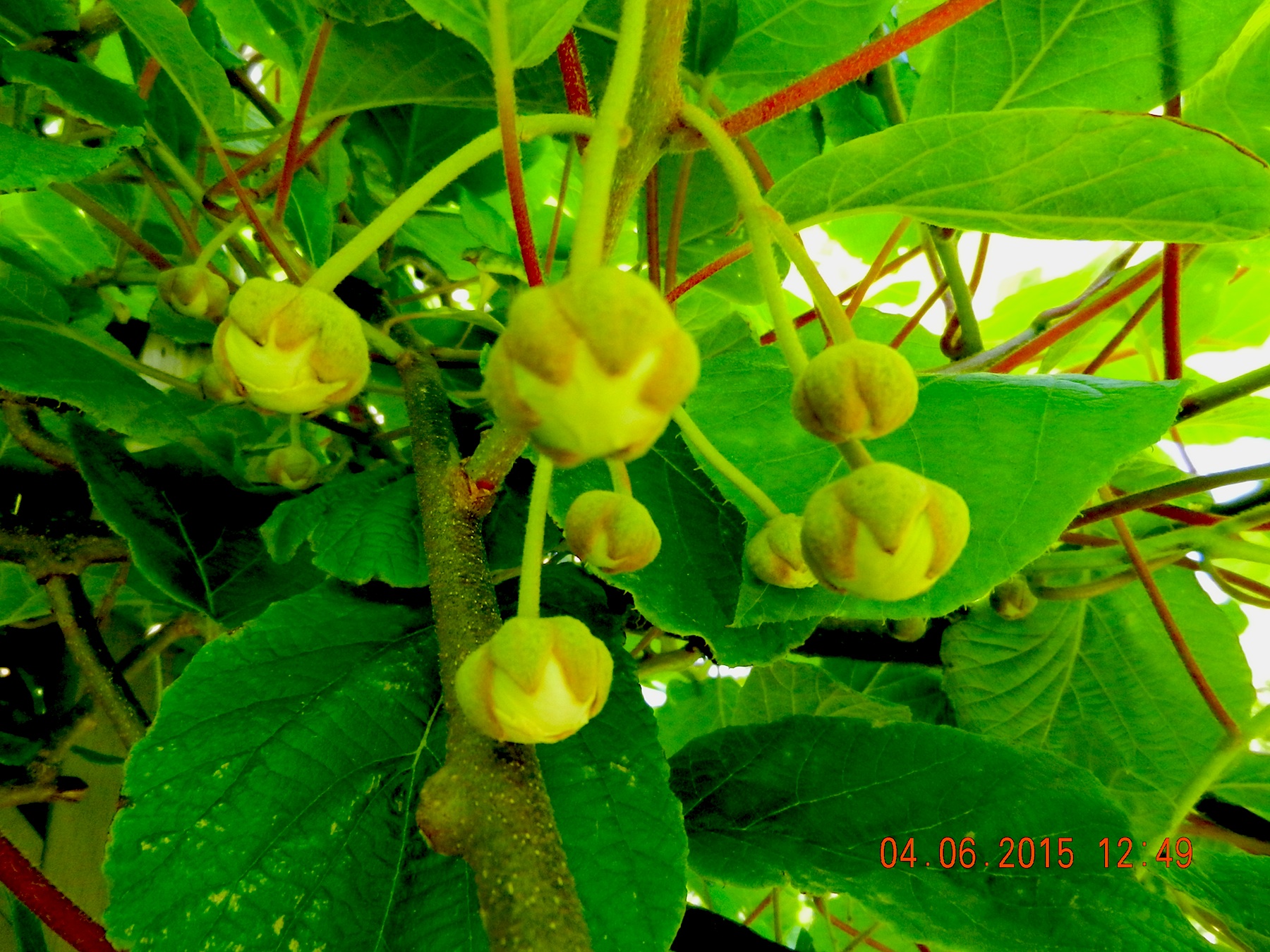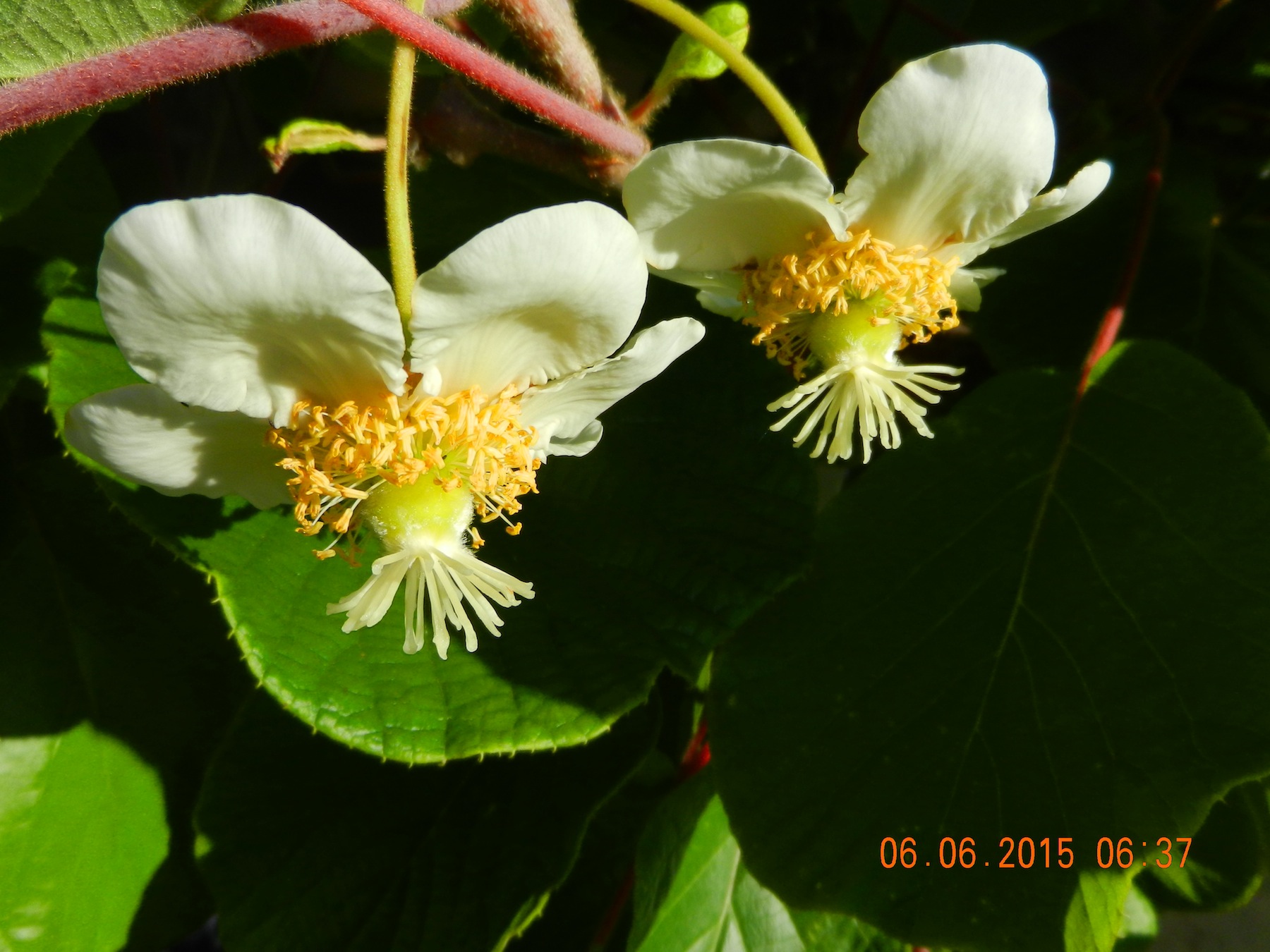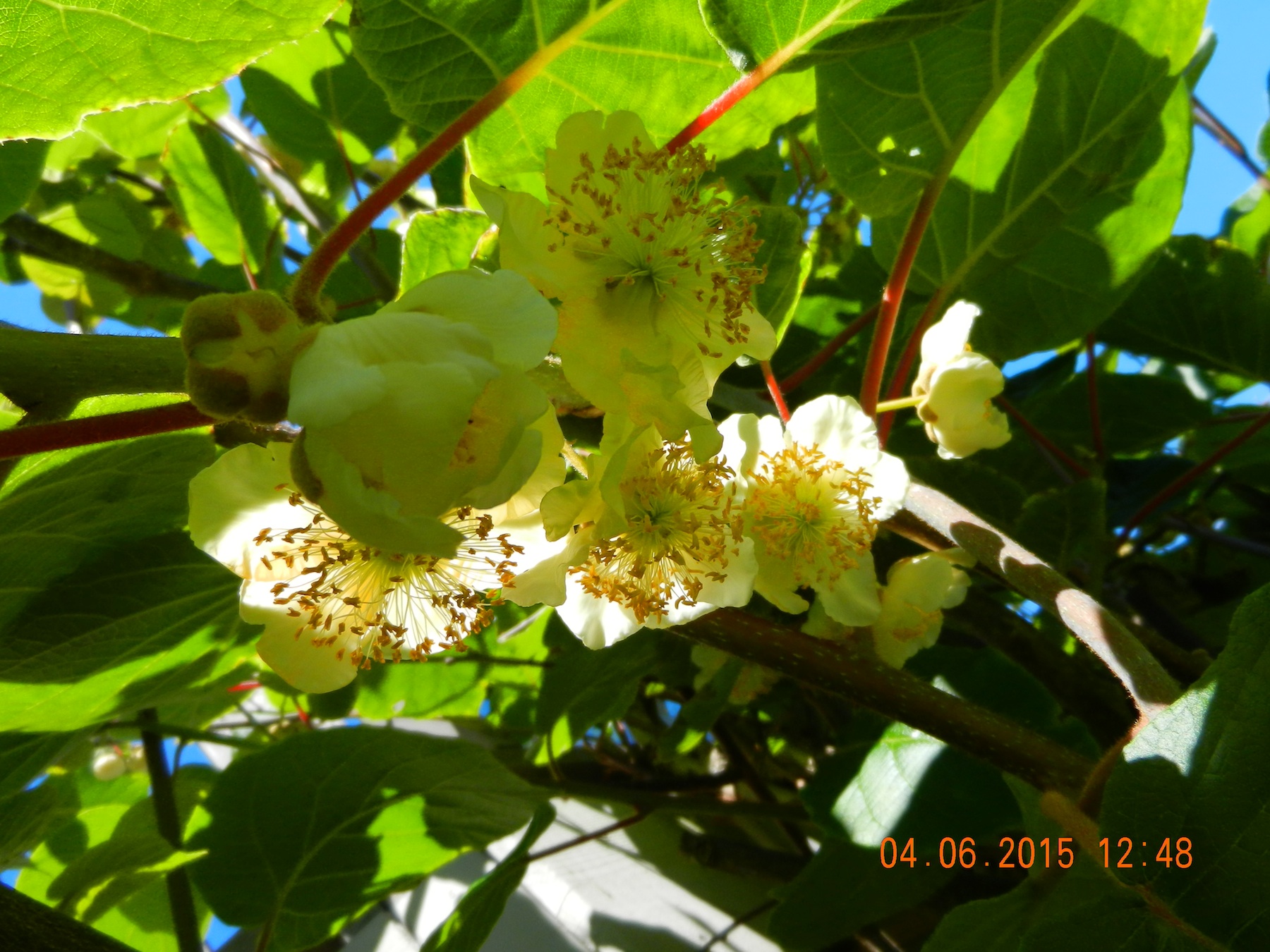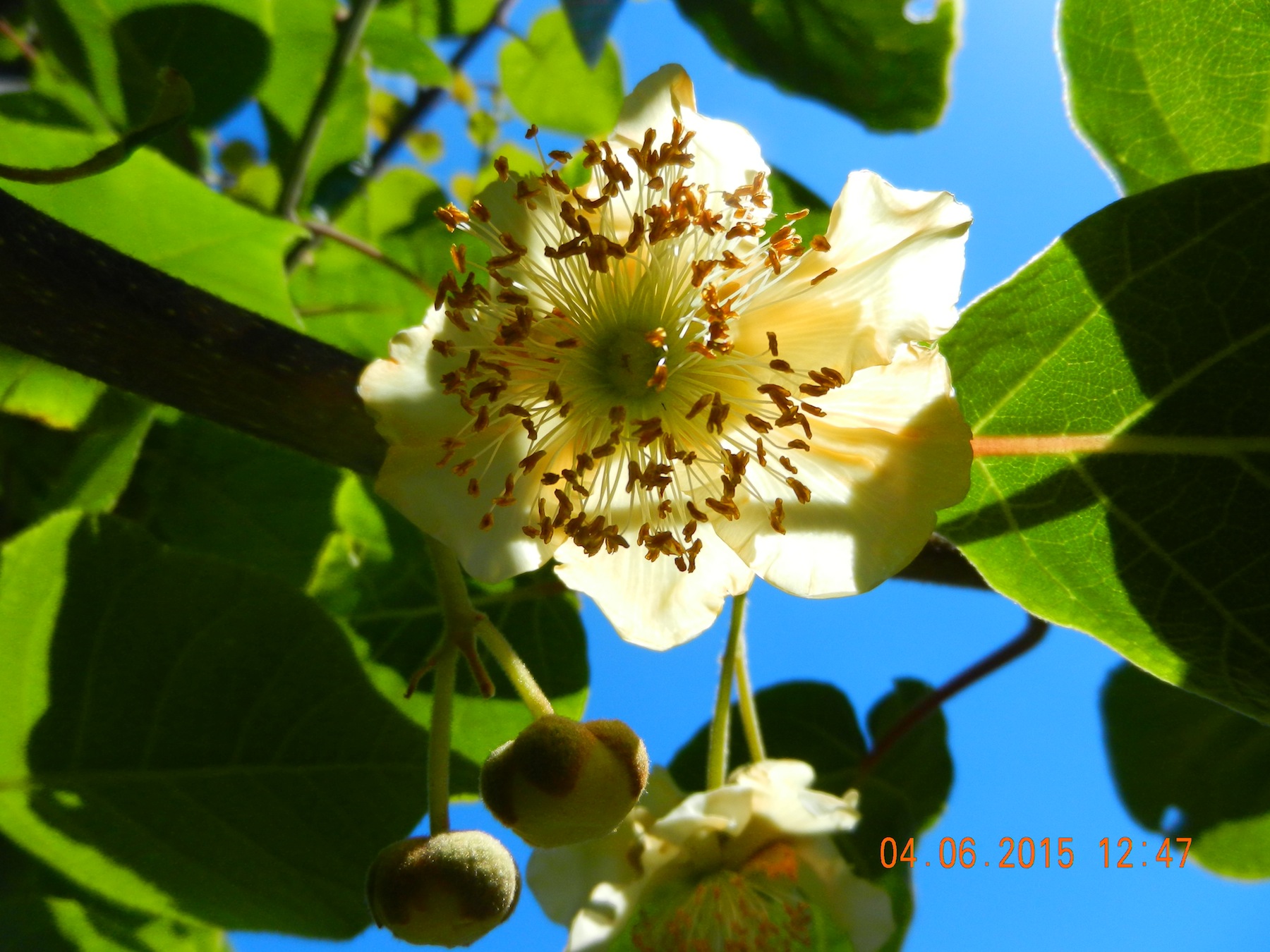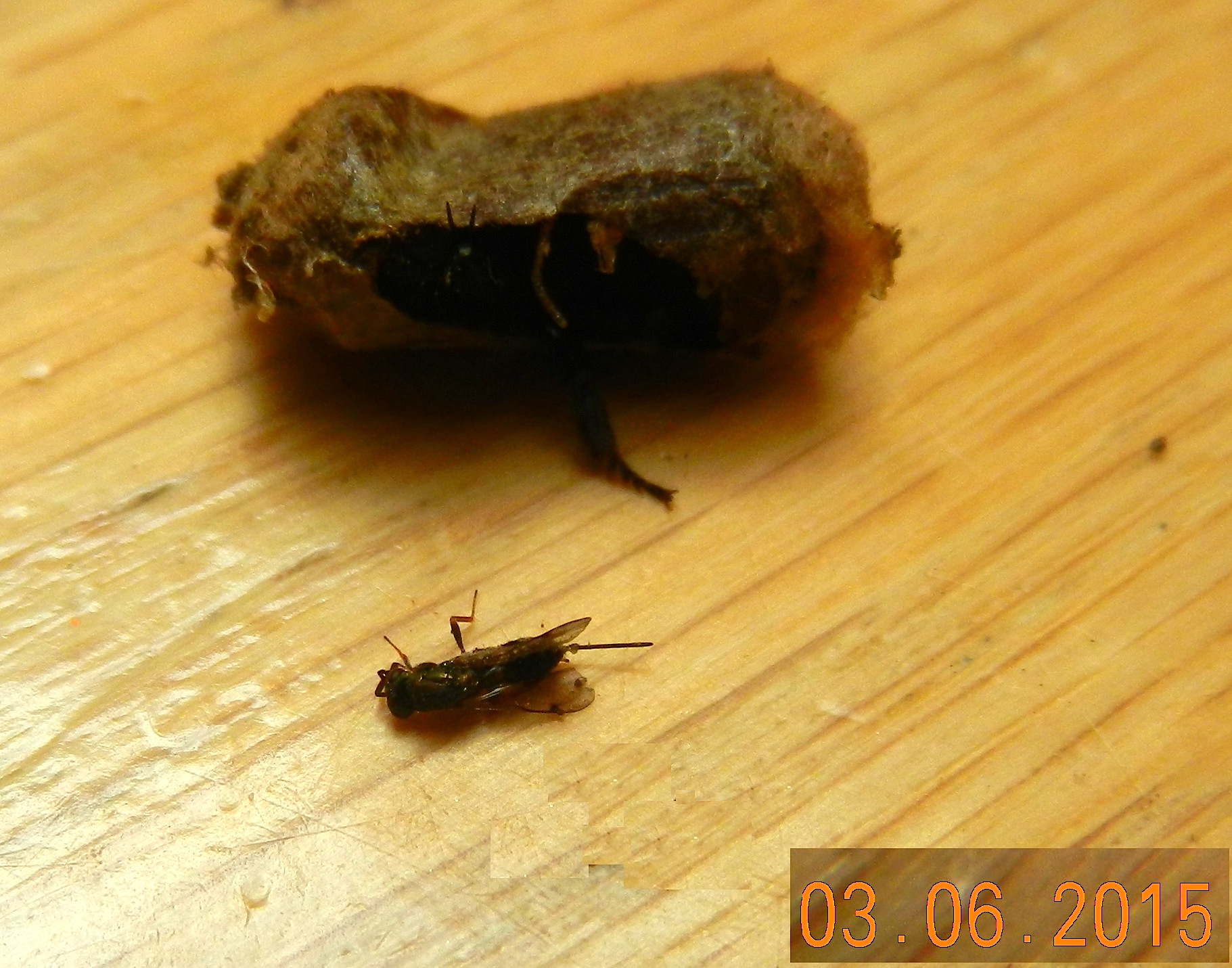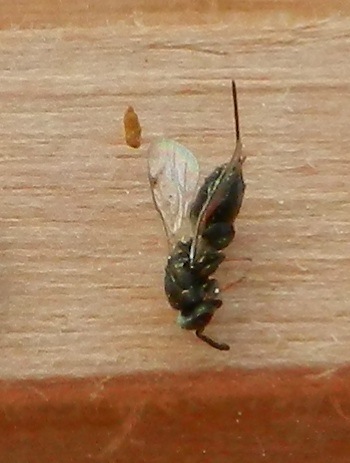This week I took out a few more mason bee which had already emerged from their cocoons while still in the containers in the refrigerator. They sit very dormant when cold but take only minutes to get active as they warm up. Their normal time of emergence from dormancy would be much earlier in the year but releasing them now ensures pollination of the late blooming fruits.
It was time to add a few more bees to the population outside since the strawberries continue to bloom and the kiwi fruit have started to bloom with this very warm weather we are having.
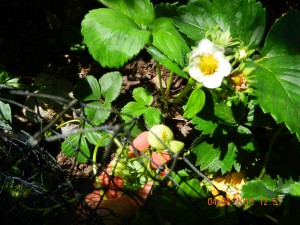
I also went around to all my mason bee boxes and removed the few cocoons that had not already hatched.
They either contained a dead bee or the larvae of the Monodontomerus, or “mono” which is a parasitic wasp that lays its eggs on the larva, usually within the cocoon of the mason bee. The tiny adult wasps emerged from one such cocoon. You can see the long penetrating ovipositer on the tail end. These have to be destroyed before they get to the bee larvae in the new cocoons.
NOTE: I have updated this 2015 post in order to make it appear closer to the other mason bee information
